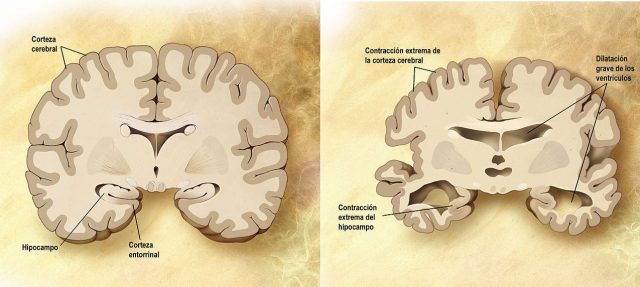The human brain is undeniably the most powerful organ of the body and yet it weighs only 3 pounds. It is comprised of texture that is similar to firm jelly and has 3 parts – the cerebrum, the cerebellum and the brain stem. The cerebrum is that part that fills up major part of your skull and it is responsible for problem-solving, remembering, feeling and thinking. This part also controls the way you move. The cerebellum is the portion at the back of your head just under the cerebrum and this part plays a role in maintaining your balance and coordination. Beneath the cerebrum and in front of the cerebellum lies the brain stem which is the bridge between the brain and spinal cord. This part functions in digestion, breathing, blood pressure and heart rate.
The richest networks of blood vessels nourish your brain and if you’re thinking really hard, your brain will consume 50% of the oxygen and fuel that it receives. Did you know that with every heartbeat, arteries transfer around 20-25% of the blood to the human brain? There are billions of cells that consume 25% of the fuel and oxygen that is carried by blood.
Straight under the microscope – How Alzheimer’s alters the entire brain
When a person develops Alzheimer’s disease, this leads to the death of nerve cells and tissues all over the brain. Eventually, the brain shrinks drastically thereby having an impact on all the functions of the organ. Scientists can even witness the harsh effects of Alzheimer’s disease when they take a look at the tissues of the brain under the microscope. They’re still not sure about the reason that causes death of cells and loss of tissues in a brain that is affected by Alzheimer’s.
Tangles and plaques usually spread throughout the cortex in a pre-set pattern with the progression of Alzheimer’s. The progression rate varies from one person to another. A person suffering from Alzheimer’s usually lives for 4-8 years after being diagnosed but he can survive with the disease for as long as 2 more decades, depending on the course of the disease and the age of the person. A person with several other health conditions may suffer more than someone who only has Alzheimer’s. Most of the disability care service providers report that majority of their patients are above 55 years of age.
Dementia – A detailed study on the disease of forgetfulness
Dementia is an umbrella term used for describing a collection of symptoms which are caused by several disorders that affect the brain. This is not a single disease but it affects behavior, thinking and the patient’s ability to carry on with his regular tasks. Functioning of the human brain is impacted in such a manner that it interferes with the social and working life of a person. Incapability of carrying out regular activities is a hallmark of dementia and it results from declined cognitive ability.
Physicians usually diagnose dementia whenever two or more cognitive functions get impaired. The functions are as follows:
- Language skills
- Memory
- Spatial skills
- Understanding of information
- Attention
- Judgment
People who have dementia usually have solving issues and controlling emotions. They can even go through agitation, changes in personality, hallucinations and delusions. The symptoms that a person may face will be based on the brain parts that are damaged due to the disease. Few of the nerve cells inside the brain stop functioning, others lose connections and few cells even die.
Pivotal biological processes inside the brain
Any healthy human brain consists of tens of billions of neurons which are nothing but specialized cells that transmit and process information through chemical and electrical signals. Neurons are responsible for sending messages to various parts of the brain, to and from the brain to the different organs of the body. As soon as someone is diagnosed with Alzheimer’s, this leads to a discontinuation of communication of the neurons thereby leading to death of cells and lack of proper functioning.
The neurons usually have 3 main parts – a cell body, several dendrites and one axon.
- Cell body comprises of the nucleus which is home to the genetic blueprint that monitors the activities of the cells.
- Dendrites are structures that look similar to branches that reach out from the cell body in order to gather information from the other neurons.
- The axon is a cable-like thing lying at the end of the cell body and that transmits messages to all the other neurons.
The survival and function depends on different biological processes like:
- Communication: Neurons are always in touch with brain cells and whenever it gets a signal, it generates electrical charge which moves from the axon and releases neurotransmitter chemicals in a tiny gap which is called synapse. Communication usually occurs through a wide network of brain cells and it is believed that one neuron has as many as 7000 synaptic connections with multiple other neurons.
- Repair and remodeling: Unlike several cells in the body that are short-lived, neurons can live for a long time, more than 100 years in human beings. Neurons have a characteristic of repairing and maintaining themselves. Neurons can weaken or strengthen synaptic connection or break connections with a group of neurons with a different group.
- Metabolism: Metabolism is the process of breaking of nutrients and chemicals inside a cell and this is crucial for the survival and functioning of a healthy cell. In order to perform these functions, cells need energy in the form of glucose and oxygen that are supplied by circulation of blood through the brain. The brain gets the richest supplies of blood and also consumes nearly 20% of the energy that is utilized by the human body.
Hence, as we see that neurons play an imperative role in operating the central nervous system, there are other cells too that are equally vital for the functioning of brain health. For example, glial cells are the most numerous brain cells that even outnumber neurons. Together they work to maintain the balance that is required for the brain to function properly.
Dementia and brain exercises – How to keep your brain healthy
Irrespective of whether or not you’ve been diagnosed with dementia, it is always possible to keep your brain healthy and challenge it. Will that help you steer clear from memory loss or delay diseases like Alzheimer’s or dementia? Scientists require doing more research in order to conclude whether or not both are relatable. Here are things that you should know for exercising your brain.
Can brain exercises help in procrastinating dementia?
Whenever people do things to keep their brain active, they can retain their thinking abilities till a longer time, as per medical researchers. Hence, you should always engage in puzzles, games and other sorts of brain training to alleviate memory loss and the onset of mental health issues. There was a study that involved more than 3000 adults who were more than 65 years of age. They went through sessions of brain training for a long period of 10 hours for a span of 6-7 weeks. This session particularly focused on techniques for skills like reasoning, memory and speed of receiving and understanding information.
People who received training went through significant improvement in all the aforementioned skills and this lasted for around 5 years. There was also an improvement in daily tasks like doing household tasks which they’ve been doing for a long time now. But the question is whether or not brain training helps preventing Alzheimer’s and dementia. When this question was asked to care providers from dementia home care Sydney institutions, they replied in the affirmative. It is indeed possible to ward off the onset by practicing few brain exercises.
In fact, there was a study that found out that when a person exercises his brain, this delays the decline in his thinking skills. Once a person is diagnosed with Alzheimer’s or dementia, if he starts exercising his brain more, this will alleviate the speed of mental decline. Then where lays the silver lining? Well, people who constantly challenge their brains will spend a shorter part of their life in a state of dementia, even though they may be already suffering from Alzheimer’s.
What sort of brain exercises should you practice?
This actually varies from one person to another but the ultimate idea is to challenge your brain with tasks so as to keep it active. How about beginning with something that is as easy as eating with your hand which you don’t usually do often? Few other things that you may try are:
- Begin to learn something new like a foreign language or your favorite musical instrument
- Play puzzles, number games or crossword games
- Engage in board games with either your grandchildren or your kids. You may even call on your friends and sit over a game of cards. Don’t play the same old games time and again. Mix up new games. This will not only exercise your brain but also enhance your social connections
- Sign up for adult education classes that are held only for adults
- Play video games or online memory games so as to improve your memory
How do brain activities help in nurturing your brain?
There have been several studies done on animals to keep their mind active. This is what the researchers found on how such activities help your brain to function properly.
- Activities diminish the extent of cell damage that may happen inside your brain due to Alzheimer’s.
- Enhances the growth of new nerve cells and
- Prompts all nerve cells to keep exchanging information with each other
As long as your brain is active with different tasks and exercises, this leads to a build-up of a supply of brain cells and the links within them. This might also lead to a facilitation of new brain cells. In fact, this the sole reason why scientists find a correlation between developing Alzheimer’s and low education levels. The extra mental activity that occurs when a person is educated can safeguard the brain by making the connections between brain cells strong.
Love your brain – Effective methods to adopt
There is growing evidence on the fact that people can alleviate the risk of cognitive decline by adopting new lifestyle habits. Remember that it’s never too late to start off with the good habits. Here are few ways to love your brain.
- Break into a sweaty routine: Try to engage in cardio exercises that increases the heart rate and enhances blood flow to different parts of your body. As mentioned earlier, there is a clear link between reduced cognitive decline and physical activity.
- Start reading books: There is never a right or wrong time to educate yourself. Education reduces the risk of mental health decline and delays the onset of dementia. Join a community center or take classes at local colleges.
- Stop smoking: There are growing evidences that link smoking with an increased risk of cognitive decline. Hence, it is suggested that you quit smoking to such a level that it can be compared with those who have never ever smoked.
- Know your health: Few of the risk factors for stroke and heart diseases are high blood pressure, obesity and diabetes. These diseases also have an adverse impact on your cognitive health. So, just as you take care of your brain, make sure you also take care of your heart.
- Steer clear of head injury: Did you know that brain injury can increase your risk of developing dementia due to cognitive decline? This is why health experts always suggest you to use a helmet, wear a seat belt while driving and taking cautious steps while using the stairs.
- Get enough sleep: Not getting proper sleep due to sleep apnea or insomnia may lead to problems in thinking and memory. So, catch some Zzzz’s often.
So, now that you are sure about how to keep dementia and Alzheimer’s at bay, follow the methods discussed above. If you still get diagnosed with the disease of forgetfulness, know how to battle it.

A professional writer with over a decade of incessant writing skills. Her topics of interest and expertise range from health, nutrition and psychology.




